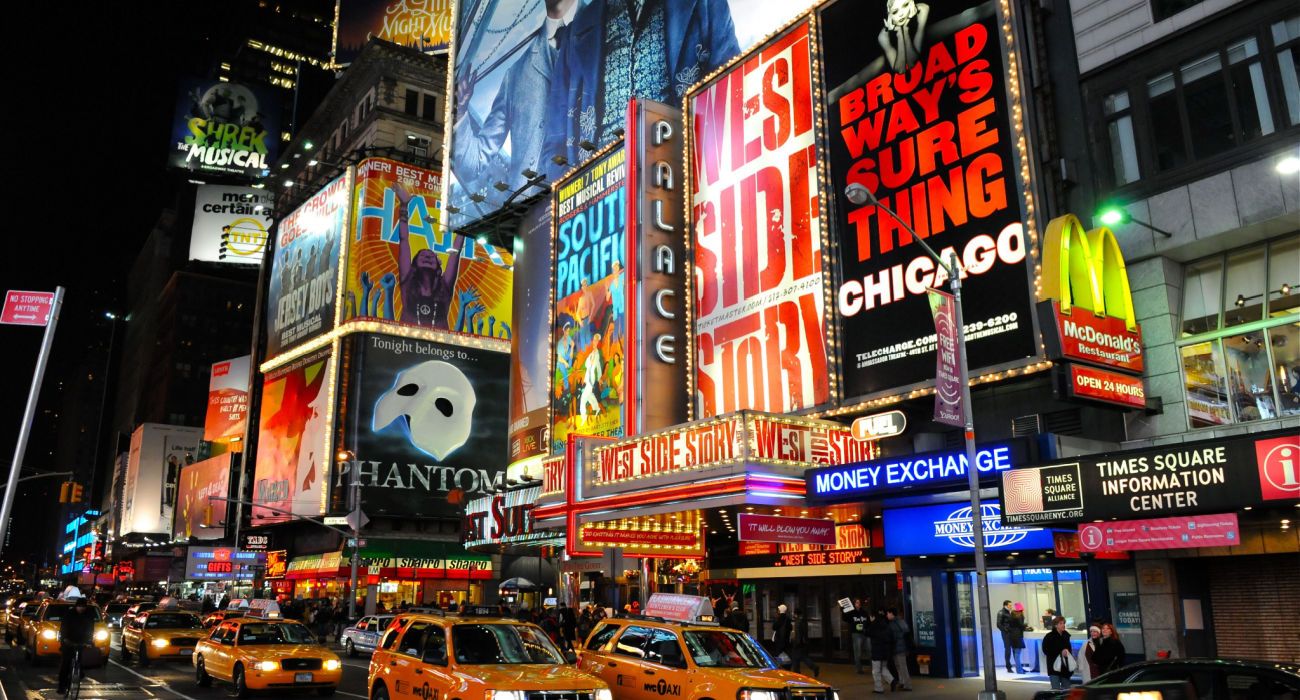Quick Links
"Broadway" is just the name of a street, and yet, today, Broadway is synonymous with American theater. It is arguably the most famous street in the world and an icon of New York City. Today people come from far and wide to see the world-class theater shows on Broadway. Broadway was not always the prestigious destination that it is today. So what is the tale of this road? How did it come to be so famous?
Like many other historic parts of New York, Broadway's origins trace back to the early colonial days of the Dutch and the Native Americans before them. New York City is one of the oldest cities in the United States, with some of the oldest buildings in the nation still standing.
Prehistory & Dutch Colonial History Of Broadway
Broadway dates back to pre-Columbian America. As the Europeans arrived and settled the area, they made use of existing Native American trails in the area. It was the Wickquasgeck trail before the arrival of the Europeans. They were a Munsee-speaking band of Wappinger people who used to live on the east bank of the Hudson River.
They were drawn into conflict with the Dutch and then English colonists of the area. Eventually, the Dutch established the Dutch New Amsterdam colony and the Wickquasgeck trail became a major Dutch north-south main thoroughfare.
- Length: 13 Miles (Through Manhattan)
- Full Length: 33 Miles (Terminating By Sleepy Hollow)
- Originally: The Wickquasgeck Trail
- Oldest: North-South Main NYC Thoroughfare
Early in the 17th century, it was 80 feet wide and muddy. It was the route that the Dutch drove their livestock through the colony. They called this broad road "Brede Wegh" - Broad Way.
The Colonial & Early American Period
Dutch rule was not to last, and soon, the English took over New Amsterdam (renamed New York) and Anglicized "Brede Wegh" as "Broad Way."
In the years after that, it remained a filthy mess. Hogs could be found rummaging in the streets while pirates frequented the taverns, according to The Guardian.
- Fun Fact: Broadway Was (Briefly) The Center Of The Capital Of The USA
Still, as the main gathering place of the city, it attracted rich and poor alike. The theater first became popular in New York in 1750.
The city continued to grow during the colonial period and post-colonial; very briefly, it was even the residence of the first president of the fledgling United States. George Washington briefly moved into 39-41 Broadway in 1790 - but the government moved to Philadelphia the next year.
Broadway was extended north through tough marshlands, and the money and grand homes shifted north. In the 1800s, Broadway became the place to get the first pick of Paris fashions arriving from Europe, and shopping along it became a cultural phenomenon.
Transformation Into The Theater Capital Of The World
At independence around 1790, NYC was seeking to compete with the more desirable American cities like Boston and Philadelphia. By the late 1800s, it was competing with the top cities of the world like Paris and London.
Electric light arrived in 1880, and Broadway saw its first electric billboard in 1892. One of its first audacious ads was at 38th Street (in 1910). It was a 72-foot high, and 90-foot wide ad inspired by the Broadway hit Ben-Hur and featured a chariot race. The sign had 20,000 incandescent bulbs that flashed 2,500 times a minute.
Most of the Broadway theaters are centered in the Theater District in Midtown Manhattan (there are also many other theaters, movie theaters, restaurants, hotels, and other entertainment clustered there). The district is located between West 40th Street, West 54th Street, Sixth Avenue, and Eighth Avenue.
The Theater District began attracting theaters and restaurants in 1883, starting with the Metropolitan Opera House. The Oscar Hammerstein I moved there in 1889, and accessibility was enhanced with the opening of electrified trolley lines in 1899 and then New York City Subway's first line in 1904.
- Times Square: Part Of The Theater District
- Theaters: 41 Broadway Theaters
Today there are around 41 professional theaters on Broadway with 500 or more seats. They are clustered in the Theater District and Lincoln Center and are one of the Big Apple's greatest tourist attractions. By 2018 only one Broadway-class theater (Vivian Beaumont Theater) was not located in the Theater District.

